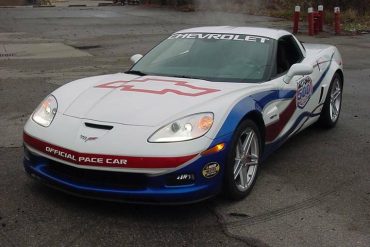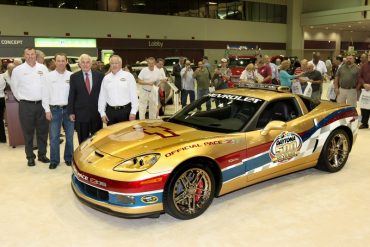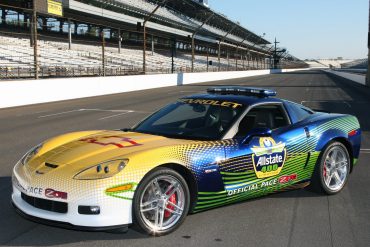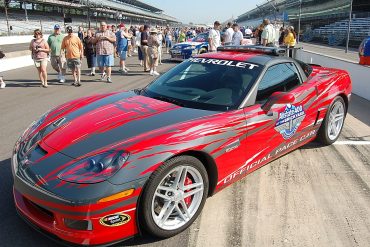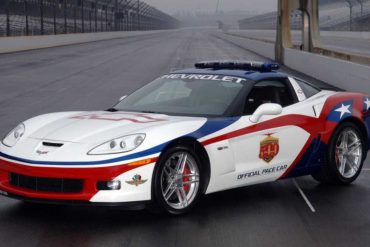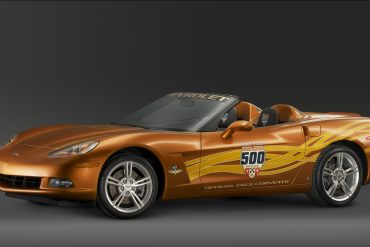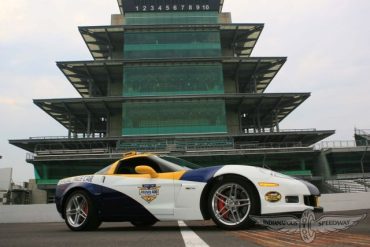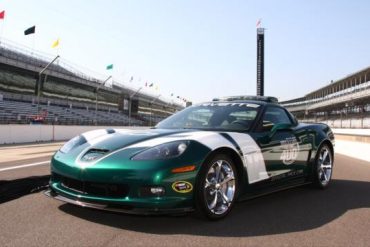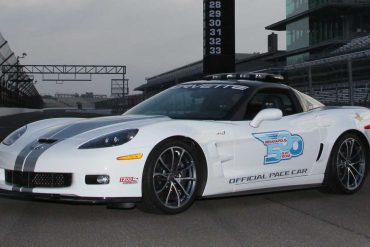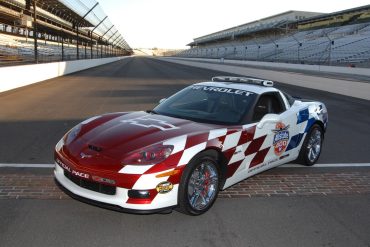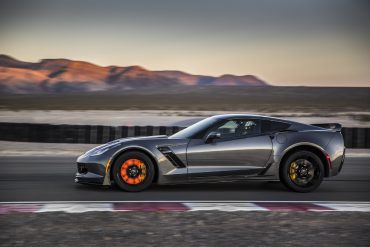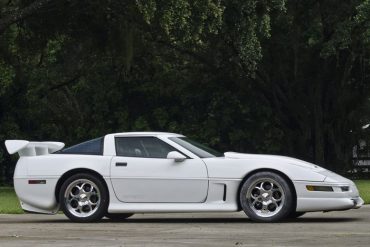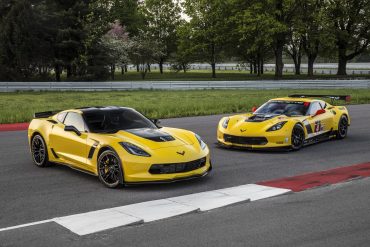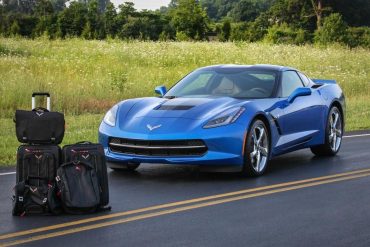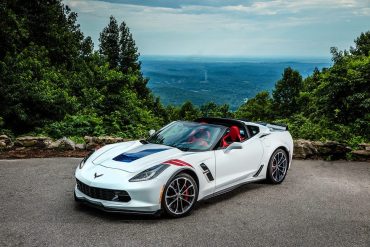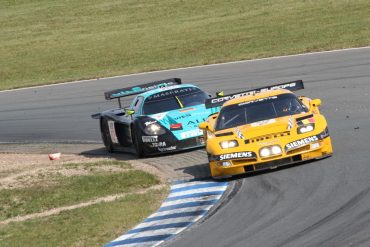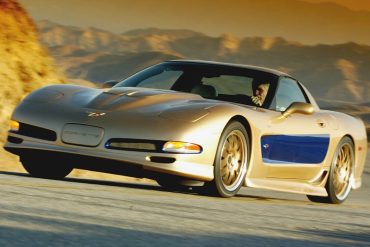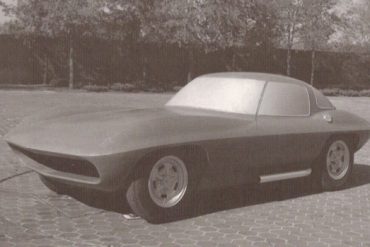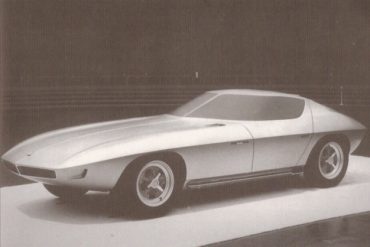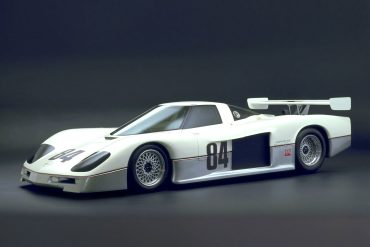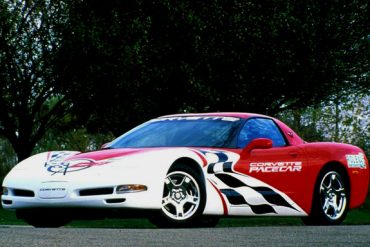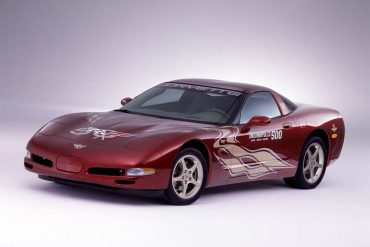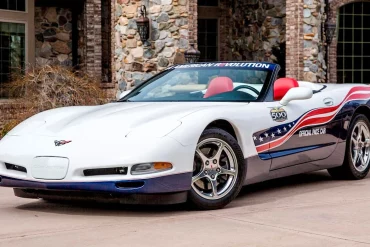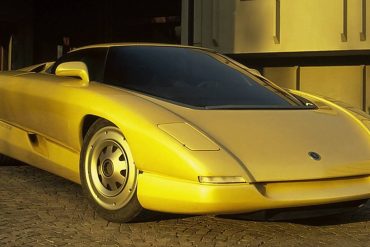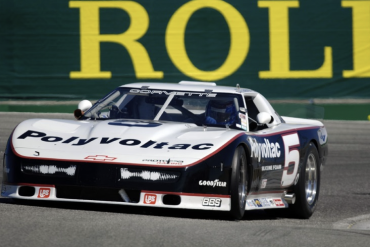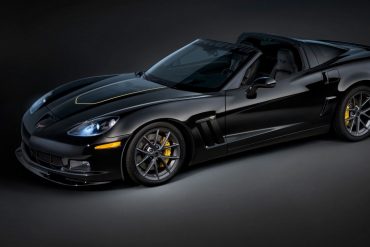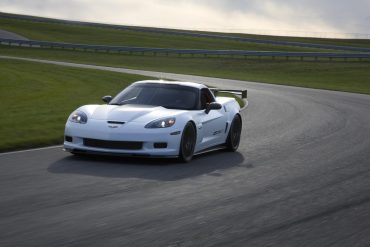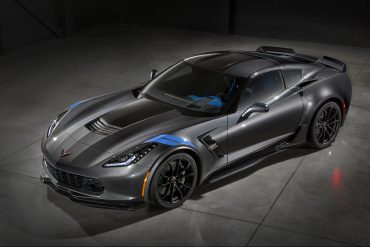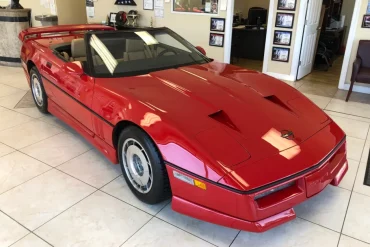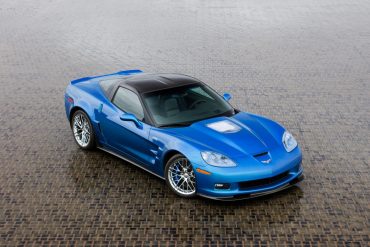NEXTEL Cup drivers Tony Raines and Jeff Green, along with hundreds of fans in Daytona Intemational Speedway's acclaimed NEXTEL FANZONE, got the first look at the 2007 Daytona 500 pace car with a special unveiling during the NASCAR Jackson Hewitt Preseason ‘Thunder Fan Fest. Corvettes were also used as Track cars and other support vehicles during the event activities at that years Daytona Speed Weeks. Corvettes were also used as Track cars and other support vehicles.
With defending Daytona 500 Champion Kevin Harvick at the unveiling, surrounded by Chevrolet, General Motors and Daytona International Speedway officials, hundreds watched the much-anticipated unveiling of the 2008 Corvette Z06 Daytona 500 Pace Car ~ the Official Pace Car of The Daytona 500, NASCAR's biggest race. Apart from its special paint and the addition of a integrated light bar, it is almost identical to the street version.
2008 marks the 15th time that Chevrolet has paced the Alstate 400 at the Brickyard and the fourth consecutive time Corvette has led the pack. Chevrolet's pacing tration at the Indianapolis Motor Speedway also extends to the Indianapolis 500 where Chevrolet has paced that esteemed race 19 times with Corvette leading the field 10 times.
2009 marked the 16th time that Chevrolet has paced the Allstate 400 at the Brickyard and the fifth consecutive time Corvette has led the pack. Chevrolet's pacing tradition at the Indianapolis Motor Speedway also extends to the Indianapolis 500 where Chevrolet has paced that esteemed race 20 times with Corvette leading the field 10 times.
Two racing icons will unite when Lance Armstrong, seven-time Tour de France winner, drives the 2006 Chevrolet Corvette Z06 pace car to lead the field to the start of the 90th running of the Indianapolis 500 on May 28, 2006. For a record 17th time, a Chevy will pace the race, and it's the eighth time for a Corvette to be leading the pack. The only changes made to prepare it for this year's role were the addition of strobe lights and racing safety gear.
A 2007 Chevrolet Corvette convertible paced the 91st running of the Indianapolis 500 on May 27, 2007. As it was selected as the Official Pace Car, Chevrolet supplied several identically prepared and uniquely trimmed Corvette convertibles – in new Atomic Orange paint with distinctive gold ribbon graphics – that served in the official pace duties of the race, as well as supporting activities. This year, the driver of this Pace Car was Patrick Dempsey.
A 2006 specially outfitted Corvette Z06 served as the Official Pace Car of the 13th Allstate 400 at the Brickyard on Sunday, Aug. 6 at the Indianapolis Motor Speedway. Chevrolet cars have paced the prestigious NASCAR NEXTEL Cup Series race at each of the 12 previous events, but the Corvette has never before been the Chevrolet brand chosen to lead the field to the green flag at the historic 25-mile IMS oval track. There's a first time for everything.
It was announced on July 23rd, 2010 that the 2010 NASCAR Brickyard 400 will be paced by this Green and White Corvette Grand Sport Coupe while Arctic White Corvette Grand Sport Convertibles wil serve as Festival (parade) cars. Camaro Coupes will also be used as support vehicles. The color is reminiscent of Bowling Green Metallic, last seen in 2001. This marked the 17th time that Chevy paced the Allstate 400 at the Brickyard.
A 2013 Chevrolet Corvette ZR1 led the starting field of the 96th Indianapolis 500 to the green flag Sunday, May 27 at the Indianapolis Motor Speedway. With 638 horsepower, the Corvette ZR1 is the most powerful production car ever to serve as the Pace Car during the Indianapolis 500. Restaurateur, best-selling author and host of the Food Network’s hit show “Diners, Drive-ins and Dives” Guy Fieri was the driver.
A Chevrolet Corvette Z06 paced the field for the Allstate 400 at the Brickyard on Sunday, July 29 at the Indianapolis Motor Speedway. A Chevrolet has performed pace car duties for all 14 editions of the Allstate 400 at the Brickyard, one of NASCAR's most highly anticipated events since the inaugural in 1994. Also, Chevrolet once again supplied event support vehicles, including Silverado pickup trucks, for on track activities.
The C7 Z06 enters supercar territory with race-proven design, advanced technologies and world-class performance. With track-focused Z07 performance package, 2015 Corvette Z06 delivers faster lap times than 2013 Corvette ZR1. It is the first Corvette Z06 to offer supercharged engine, paddle-shift automatic transmission and removable roof panel for coupes, and convertible model. New LT4 supercharged 6.2L V-8 SAE-certified at 650 hp and 650 lb-ft of torque.
For the fourth generation Corvette, legendary Corvette racer John Greenwood developed the G4R. It was essentially a radical bodykit that usually followed a high level of performance upgrades. Included was a ground effects package that had integrated lights on the front valance. Furthermore the a new engine scoop and rear wing were fitted.
The 2016 Corvette Z06 C7.R Edition is a road-going, track-capable homage to the Corvette Racing C7.R racecars. It’s offered in Corvette Racing’s signature yellow livery – or black – with coordinated exterior and interior accents. Only 500 examples of the C7.R Edition were built and all included the Z07 Performance Package with carbon ceramic brakes, as well as a specially serialized vehicle identification number. Corvette special editions don't get more fun than this.
The launch of any new Corvette is significant, and the new-for-2014 C7 model launching this year brings sweeping changes, including upgraded performance and a more contemporary, international styling language. To mark the car’s debut, Chevrolet is prepping the Corvette Stingray Coupe Premiere Edition—and just 500 will be built. While the engine and the transmission options remain unchanged, the Premiere Edition isn’t going to be hard to pick out of a lineup.
The 2017 Chevrolet Corvette Grand Sport combines a lightweight architecture, a track-honed aerodynamics package, Michelin tires and a naturally aspirated engine to deliver exceptional performance. The Grand Sport Collector Edition features an exclusive Watkins Glen Gray Metallic exterior with Tension Blue hash-mark graphics, satin black full-length stripes and black wheels. the new Grand Sport combines a lightweight architecture.
The Corvette C5-R was part of a plan by General Motors and their Chevrolet brand to create a factory team to participate in grand touring races not only in North America, but also elsewhere in the world, most notably at the 24 Hours of Le Mans. GM had previously been against approving factory support for Corvette racing programs, although the IMSA GT Championship's Corvette GTPs had seen some support until they ended competition in 1989.
In 2003 Dick produced his version of a 50th Anniversary Corvette. Dick’s 50th Anniversary Corvette was bright gold with blue accents. And of course a “special” Corvette should be the toughest available version, which in 2003 was the Z06. And to top it all off, the Z06’s LS6 was opened up to the magical “426 CID.” The GS80 came out in 1986 that was more or less a Showroom Stock-prepared black beauty with very trendy lace wheels.
Somewhere in the second part of 1959, project XP-720 begins at GM Styling, to design a production Corvette based on Bill Mitchell's Sting Ray racer. It would become known as the C2 or second generation Corvette. In October of that same year, a clay mock-up of project XP-720 is completed and put on display for General Motors' management viewing.
The 1963 Wedge Corvette split windshield concept was a sleek, front-engine design study that revived the Q Corvette’s split-windshield gullwing-style doors with a short, bobbed tail. Late in 1963, a GM Styling team under Henry Haga prepared this future Corvette proposal. Its sophisticated lines included side-mounted exhaust pipes.
A Corvette in name only, the Corvette GTP (Grand Touring Prototype) was one of the fastest and most exotic race cars ever to wear a red Bowtie. Based on an English Lola T600 chassis and powered by an all-American turbocharged Chevy V6, the mid-engined racer was a rocketship. At full boost, the Corvette GTP's 3.4-liter (209ci) V6 pumped out more than 1,000 horsepower.
Corvette’s decision to become the official pace car of the Rolex 24 Hours at Daytona is a key component of Chevrolet’s strategy to reinforce Corvette’s image as "America’s Performance Icon." Jim Campbell, Corvette brand manager, is responsible for developing this strategy, and he’s the guiding force behind Corvette’s return to the racetrack.
For 50 years, Chevrolet Corvette has represented American performance. In 2002, Corvette also led the pack at two important racing venues: the Indy Racing League (IRL) and the 86th running of the Indianapolis 500. In its IRL pace duties, Corvette wore a two-tone white and Millennium Yellow paint scheme with checkered-flags graphics forming a V for victory.
Corvette performed Indianapolis 500 Pace Car duties for a record sixth time. It marks the third consecutive year and 15th time overall that a Chevrolet product has served as the Official Pace Car – the most appearances by any brand. The 2004 Corvette that will serve as the Indy 500 Pace Car is virtually identical to the Convertibles available today through local Chevrolet dealerships.
The Nivola may be considered Bertone’s homage to the most fascinating American sports car: the Chevrolet Corvette. The sophisticated mechanical unit of the ZR-1 was interpreted by Bertone in a European key. Bertone designed a special chassis to make a sporty "boat" with a mid engine. This mechanical layout made it possible to exploit all the power of the engine when accelerating and warrant perfect roadholding on bends.
The story of this Chevrolet begins with Fords - specifically, the purpose-built IMSA Mustangs and SCCA Trans Am Mercury Capris that became major forces in those series in 1984-85. In 1985, a Mustang built by Jack Roush and chassis firm Protofab took a young John Jones to the IMSA GTO crown and a Roush Protofab Mercury Capri had done the same in the Trans Am championship.
The Corvette Jake Edition is a Grand Sport Coupe, with Z06 wheels featuring the Competition Gray finish. The matte Jake hood graphic from the GT1 commemorative model adds a subtle visual statement, while a host of other accessories round out the car’s unique appearance. Most of the parts added to this special Grand Sport are available today as Genuine Corvette Accessories or through any Chevrolet dealer’s parts department.
The 2011 Chevrolet Corvette Z06X Track Car Concept was designed to suggest new components and a new idea for transforming a production Corvette into a serious and closed-course track car. This track car concept was developed and produced by Chevrolet in partnership with Pratt and Miller, the partners in Corvette Racing in the American LeMans Series. The competition-oriented modifications of the concept include a polycarbonate rear window, roll cage, safety harness, racing seat.
This special edition takes the upgraded handling and appearance that comes with the Grand Sport moniker and adds some special cosmetic touches for extra uniqueness. Along with a stunning gray metallic paint color, it features blue accents that harken back to previous Grand Sports. A representation of the original Grand Sport race car is embossed onto the headrests. Powered by the regular (and excellent) LT1 V-8, it features magnetic ride control, an electronic limited-slip differential, and Grand Sport wheels.
Offered from 1987 to 1991, the RPO-B2K upgrade was available from any Chevrolet dealer and also Callaway’s first major Corvette tuning program. Together, GM and Callaway made the upgrade package a Regular Production Order (RPO) which was the first time GM had outsourced such an option to a specialist manufacturer. It even had a factory back warranty. As the C4 updated, so did Callway’s program and by 1988, the B2K was pushing 382 bhp and 562 ft. lbs. of torque.
The ZR-1 returned with the 1990 Corvette lineup after an eighteen year hiatus. This time, it featured a special LT5 engine that had been developed by Lotus (which, at the time, had been a subsidiary of General Motors.) The LT5 engine featured an all-aluminum block, four overhead camshafts, and 32 valves. It also featured an air management system which enabled the car to maintain proper operation while closing off half of its fuel injection system.


